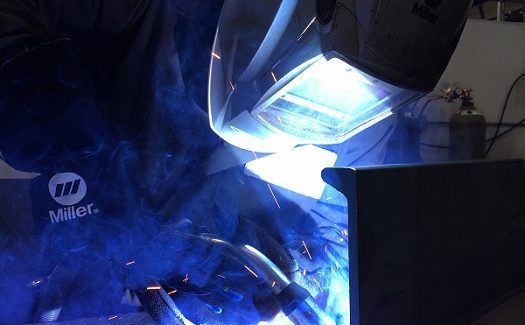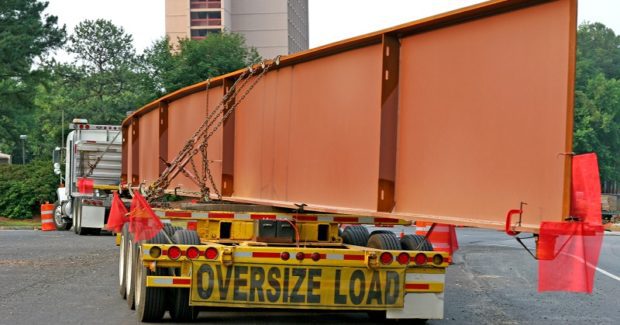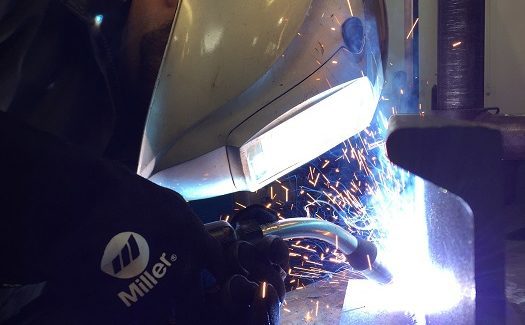Welding High Strength Steel
Here are some answers to frequently asked questions about the process of welding this material, along with insights to help you improve your weld quality and increase your productivity.
Posted: January 2, 2019
High strength steels continue to be popular for fabrication applications that require materials with less weight and thinner sections, all without sacrificing strength. These include the building of trailers, heavy equipment, pressure vessels, bridges and more. As with any material, high strength steels require special attention when it comes to welding. To help, here are some answers to frequently asked questions about this material and the process of welding it.
WHAT IS HIGH STRENGTH STEEL?
High strength steel gains its strength from specific alloying elements, including manganese and nickel, as well as molybdenum and chromium, in some cases. This material has both high tensile and high yield strengths. Tensile strength refers to the amount of force required to bend the material until it breaks. Yield strength is the amount of force necessary to deform or bend the steel. Having higher levels of strength means there is less chance of high strength materials breaking or deforming. Often this material is formulated according to industry standards and classified as ASTM, ABS or AISI, but there are proprietary manufacturing processes as well. For any formulation of high strength steel, it’s important to use a filler metal with the appropriate chemical and mechanical properties, especially since this material is designed to carry more and withstand more extreme service conditions.
WHAT ARE THE CHALLENGES OF WELDING HIGH STRENGTH STEEL?
Since high strength steel is often used in thinner sections, it reduces weight for the given application. However, it also can cause the material to shrink during the welding process, resulting in residual stress in the weld joint and greater risk of distortion. If the application requires multiple passes, placing smaller weld beads can help keep the heat input lower and reduce distortion. Keeping heat low also lessens the risk of weakening the material. Cracking can also be an issue when welding high strength steel. For that reason, it’s important to control the amount of hydrogen being introduced into the weld. Low hydrogen filler metals are one line of defense. Controlling the cooling rate of the weld and material through proper preheat and the monitoring of interpass temperatures can also help reduce the opportunity for cracking.
WHAT FILLER METALS ARE BEST FOR THE JOB?
Unlike more common materials like mild or carbon steel, there are fewer filler metal options for welding high strength steels. But like all materials, matching the mechanical strength of the filler metal with the high strength steel is key to maintaining weld integrity. Low alloy metal-cored wires and low alloy gas-shielded flux-cored wires provide high tensile and yield strengths for welding high strength steels. They also contain low levels of hydrogen and carry a specific designator to indicate that. For example, an H4 designator means that the wire has less than 4 ml of diffusible hydrogen per 100 grams of weldment. American Welding Society (AWS; Miami, FL) E90C-D2 and E110C-K4 metal-cored wires are good choices for welding high strength steels. In the right application, they can offer higher deposition rates and travel speeds than other wires, leading to increased productivity. Most low alloy metal-cored wires also provide excellent toughness properties.
Options for welding high strength steel include gas-shielded flux-cored wires with either a T-1 or T-5 slag system. T-1 wires offer good weldability and a stable arc; however, they tend to have less ductility and toughness than T-5 wires. Conversely, wires with a T-5 slag system offer good mechanical properties and strength, as well as low diffusible hydrogen levels. Unfortunately, T-5 wires aren’t as operator friendly as T-1 wires and often generate more spatter and smoke. Depending on the application, these pros and cons will need to be weighed against one another. AWS E81T1-Ni1C/MJ H4, AWS E111T1-K3 MJ H8 and ASW E90T5-K2C/M H4 gas-shielded flux-cored wires are well suited for welding high strength steel. Like any other flux-cored wires, these wires require slag removal after welding or between passes.
FINAL THOUGHTS
Preheating helps slow the cooling rate by keeping the temperature at the right level during welding, reducing cracking opportunity and helping the material regain toughness in and around the weld joint as it cools. Always check temperatures between passes to ensure they are in the proper range. Depending on the specific material, post-weld heat treatment can help the weld and steel cool uniformly so there are less stresses in the joint.













